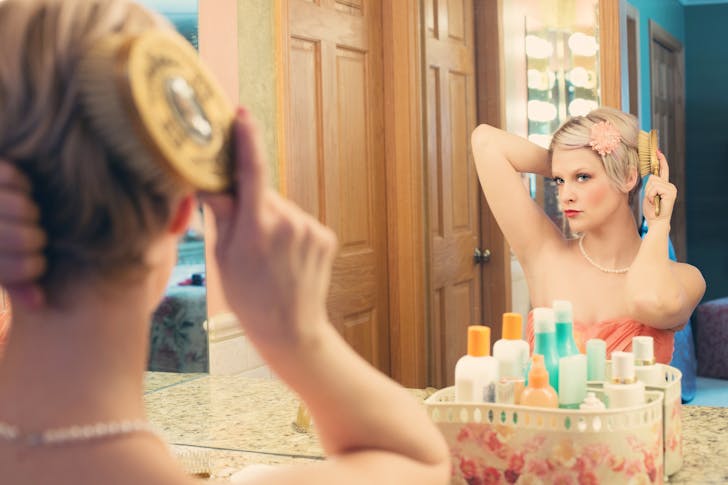The word “recession” has been on everyone’s mind lately, especially as inflation and financial uncertainty continue to affect everyday life. For hairstylists, this shift in the economy is something they are seeing firsthand. Clients are adjusting their beauty routines, with many opting for low-maintenance hairstyles to stretch their dollars and avoid frequent salon visits.
In 2025, hairstylists are noticing significant changes in client behavior. From less frequent color touch-ups to embracing natural hair, the trend towards “recession hair” is on the rise.
The Rise of “Recession Blonde/Brunette” Looks
As the recession takes hold, more clients are embracing a practical yet stylish look known as “recession blonde” or “recession brunette.” This trend involves allowing natural roots to grow out and blending them with lighter ends. Popular styles like balayage and root melts create a seamless grow-out look, so clients don’t have to worry about frequent touch-ups.

Tim / Pexels / Hairstylists are seeing more grown-ups opting for “recession blonde,” allowing natural roots to grow.
Celebrity extensionist Angelina Murphy, founder of SHEBA Luxury Hair, has seen this trend explode. She recommends shadow roots, a technique that darkens the root area, creating a natural-looking transition between the natural hair and the dyed sections. It is an intentional, easy-to-manage look that allows clients to ride out their visits to the salon with fewer touch-ups.
You bet! This is is perfect for a time when they are tightening their belts. Clients are opting for these low-maintenance styles as a way to keep their hair fresh while saving money.
Longer Gaps Between Color Appointments
Another shift hairstylists are witnessing during the recession is that clients are extending the time between color appointments. Kayla Lofaro, owner of Discotheque Salon in Los Angeles, has noticed clients pushing back their color sessions from every six to eight weeks to as long as three to four months.
In addition to this, some clients are skipping haircuts altogether. Instead, they are opting for long-lasting, dramatic hairstyles that won’t need as much upkeep.
This change is a direct response to the economic pressure many clients are feeling. A trim or color touch-up every few months instead of every six weeks adds up to significant savings. As hairstylists, adjusting to these new timeframes and expectations is key to retaining clients.
DIY Haircare
One of the most noticeable signs of a recession in the salon world is the surge in DIY haircare trends. Hairstylists are seeing a rise in at-home lash extensions, home coloring kits, and other self-care methods that allow clients to save money.

Jill / Pexels / Many clients now feel more empowered to handle small maintenance tasks themselves instead of visiting the salon for every minor issue.
Christina Carlsson, the owner of Marquee Salon and Studio, has observed this shift and has come up with strategies to address it. She promotes “sustainable hair” by focusing on cuts and colors that last longer, allowing clients to minimize their salon visits. She is also dedicated to educating her clients on proper home care.
With the financial strain that comes with a recession, more hairstylists are getting creative with their offerings. Some are introducing budget-friendly services to meet their clients’ needs, like Cara Feder, a stylist in Sherman Oaks, who introduced affordable “root and run” services.
These services target gray coverage and basic root touch-ups. They provide clients with an affordable option to maintain their hair without splurging on more extensive treatments.
Plus, David Thurston, CEO of Danger Jones, highlights the importance of price cuts on professional products. He stresses that offering discounts on salon-grade products helps support stylists while also providing clients with affordable alternatives.





